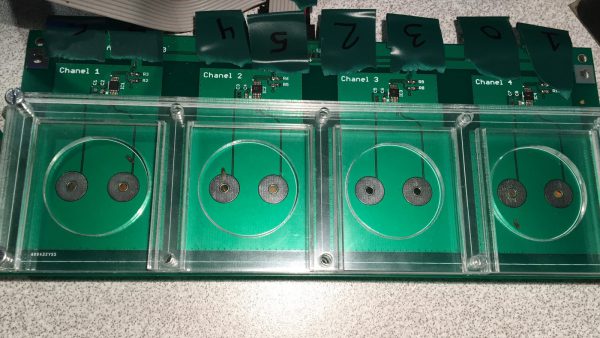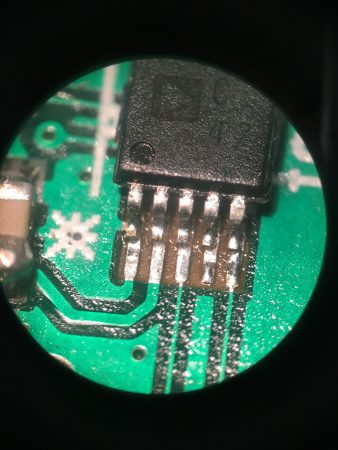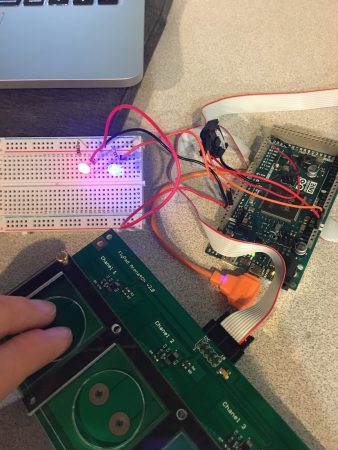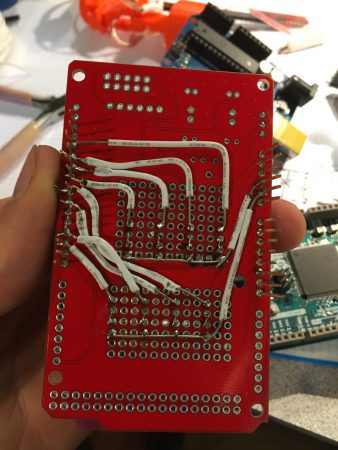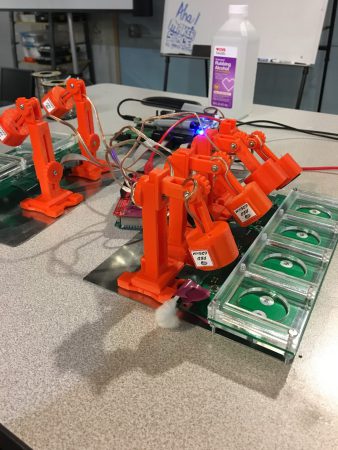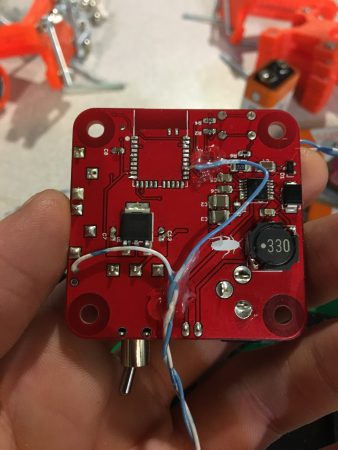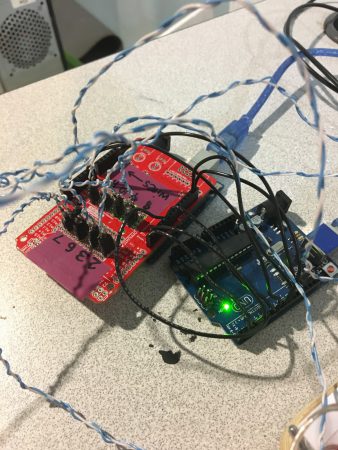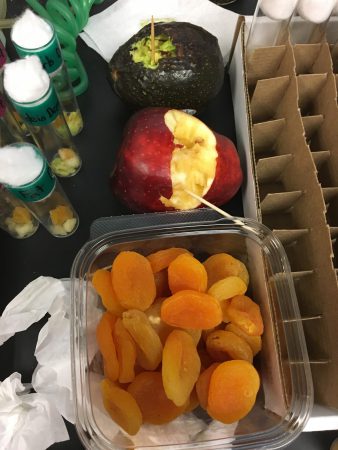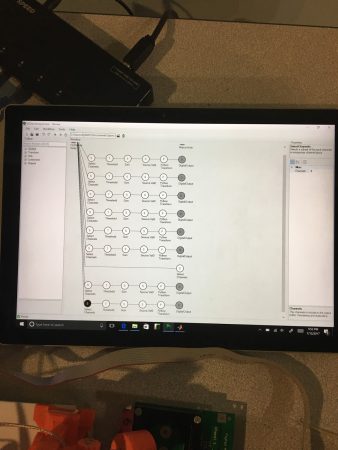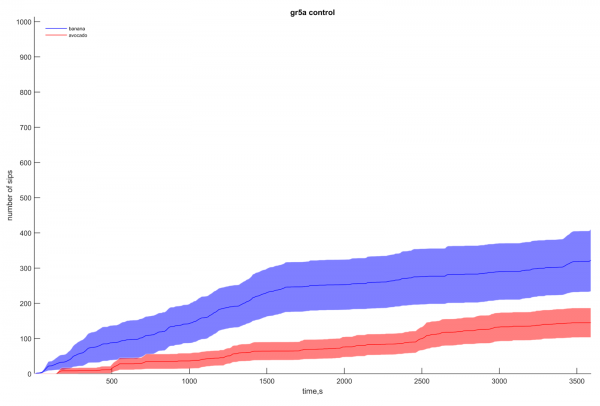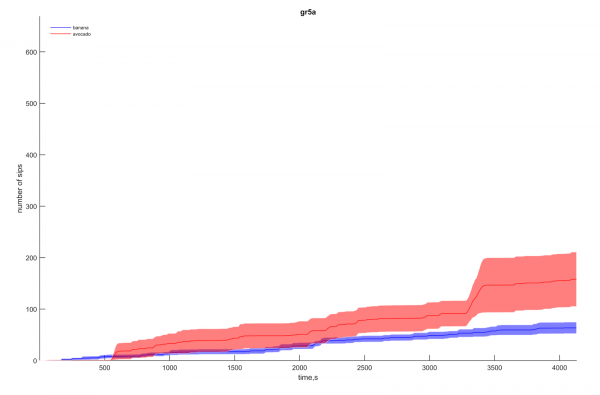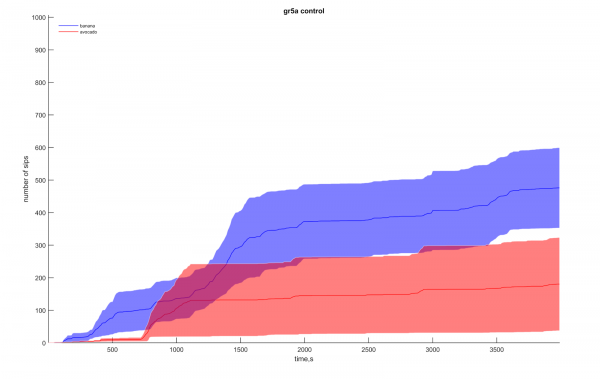Hello everyone! It’s a been over a month since my project began on studying the diet and attempting taste manipulation of the Drosophila melanogaster.
Before my experiments could begin I faced many software and hardware issues. The flyPAD itself is an extremely thin 0.6mm PCB board so every slight bend of it can result in a breaking of the soldered connections with each channel’s circuits.
In order to change my flies’ taste perception, the light-sensitive proteins which were inserted into their ‘sweet’ tasting neurons had to be stimulated by an intense red light. For a proper response, this light stimulation has to happen almost exactly when the flies take sips of the target food. To make this happen, a code was programmed into Bonsai so that an LED is turned on nearly instantaneously to when food is touched by a fly, triggered by a change in capacitance between the electrodes. This is how the flies’ taste neurons are activated at the same instant they sip certain foods to influence their food choice preference.
The instant the fly’s proboscis (mouth) touches food, intense red light shines
To get to the finalized rig I use today, I experienced firsthand just how much debugging and problem-solving is involved in research. Below is a pictorial formula of how I got to my final experimental setup:
Got my flyPAD
Integrate circuit and solder under a microscope… this is what was breaking every time the .6mm boar bent… whch was all the time
Creating circuit and code for LEDs to sink up with each channel
I soldered a shield for easy LED plugin
LEDs set up with flyPAD
soldered LEDs to their drivers, which increase the light intensity
Another arduino programmed to pulse 100 Hz light to give flies recovery time of 900 ms
Painted acrylic to avoid unwanted light penetration of neighboring LEDs
The fruit!
The bonsai workflow for LED stimulation
Over many hours of adjusting my setup and learning how to insert the food, I finally got everything working so that experiments could get underway.
To see if the flies’ taste can be changed, I had to determine what their natural food preference was. I chose banana and avocado to compare. The cumulative number of sips showed banana was preferred over avocado, as avocados have almost no sugar in them.
To see if food choice preference can be altered, LEDs were activated upon contact with avocado. This fired the gr5a sweet neurons in the flies.
As predicted, the light stimulation successfully activated the flies’ sweet neurons to alter what they perceive as sweet tasting.
To verify these results, I ran a positive and negative control. The positive, showing the desired effect which is expected from the independent variable, was the proboscis extension (seen with the green arrow) from a gr5a fly upon stimulation from the 625nm red LED light.
Fly 1
Fly 2
As for the negative control, which does not produce the desired outcome of the experiment, I put gr5a flies that had not been feeding on all trans-retinal, under the same LED treatment targeted on avocado. All trans-retinal must be ingested to activate the proteins in the flies’ neurons, otherwise light stimulation will not fire the neurons. As expected, these flies still preferred the more sugary banana over the bland avocado.
Now that I know that the alteration of Drosophila taste preference is possible, I plan to study the nutrients within the flies’ diet.
It’s easy to eat sugar, but when offered your favourite sweet snack and a healthy food, it’s hard to eat what you know is better for you. I will create this scenario for my flies. Specifically, I am interested to see if the flies will eat protein after being deprived of it, even when a tasty, sugary apple is also up for grabs.
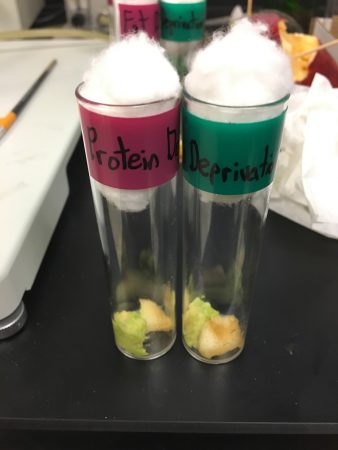
When deprived of protein, it has been found in the past that females will eat more protein when offered it again as opposed to males since they have to produce eggs. I want to see if this is still the case with natural foods rich in protein. I hypothesize that the flies will still prefer to eat a more sugary food as opposed to the nutrient they are deprived of. If this is the case, I will use optogenetics once again to see if I can make them eat the food they require the most. Are flies’ instincts to eat the nutrients they require stronger than their pickiness of taste? This is an interesting comparison to humans – as so many of us are more than willing to indulge in decadent desserts rather than eating our veggies any day of the week. Will optogenetics one day make its way into the human realm to revolutionize eating and health forever?
Thank you for taking a look at my post! I can’t wait to see what response I get out of my flies in the near future.



